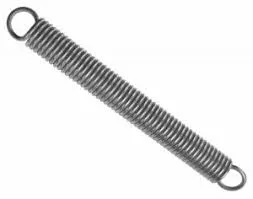
- Mobile Phone
- +8613931874955
- sales@cntcmetal.com
Truss Type Reinforcement Masonry - Enhancing Structural Integrity
Truss-Type Reinforcement in Masonry Enhancing Structural Integrity
Masonry construction has long been celebrated for its aesthetic appeal and durability. However, traditional masonry can face challenges regarding structural stability, particularly in earthquake-prone areas or locations susceptible to heavy loads. To address these vulnerabilities, engineers and architects have developed various reinforcement techniques, with truss-type reinforcement emerging as a leading solution.
Truss-Type Reinforcement in Masonry Enhancing Structural Integrity
One of the primary advantages of truss-type reinforcement is its ability to distribute loads evenly across the structure. This is particularly crucial in masonry walls, which are often weaker in tension compared to compression. By incorporating a truss system, forces can be redirected and dissipated, thereby minimizing the risk of cracking or structural failure. The triangular design of the truss effectively transfers loads from the masonry units to the foundation, ensuring that the weight is shared and reducing stress on any single point within the wall.
truss type reinforcement masonry

Moreover, truss-type reinforcement can be customized to meet the specific needs of a building project. Depending on the design requirements and environmental factors, engineers can adjust the size, shape, and materials of the truss system. This flexibility allows for tailored reinforcement solutions that maximize structural performance while maintaining aesthetic considerations.
Installation of truss-type reinforcement can occur at various stages of the construction process, whether during initial construction or as part of retrofitting existing structures. For new constructions, trusses can be integrated into the masonry design from the outset, ensuring that all elements work harmoniously. In contrast, existing masonry structures can benefit from retrofitting techniques that enhance their resilience without requiring complete reconstruction. This adaptability makes truss-type reinforcement a valuable addition to both new and old masonry buildings.
Furthermore, advances in technology have improved the efficiency and effectiveness of truss-type reinforcement systems. Computer-aided design (CAD) software allows engineers to simulate various load scenarios, enabling precise calculations of the necessary truss configurations. Additionally, modern materials can provide superior strength-to-weight ratios, enhancing the overall efficacy of the reinforcement while minimizing added weight to the structure.
In conclusion, truss-type reinforcement represents a crucial innovation in masonry construction, addressing inherent weaknesses and enhancing structural integrity. Its ability to distribute loads effectively, adaptability for various projects, and advancements in technology underline its importance in modern architecture. As we continue to face increasingly challenging environmental conditions, the integration of truss-type systems in masonry design will prove essential in ensuring that our buildings can withstand the test of time and nature, providing safety and stability for generations to come. This approach not only enhances the durability of masonry but also promotes sustainable building practices that can adapt to evolving challenges in the construction industry.
share:
-
Yard Sign Stakes: Reliable Guardians of Outdoor SignsNewsAug.04,2025
-
Wall Ties: Invisible Guardians of Building StabilityNewsAug.04,2025
-
Resilient Web: The Super Guardian Power of Concrete MeshNewsAug.04,2025
-
Masonry Accessories: A versatile assistant on building foundationsNewsAug.04,2025
-
Iron Binding Wire: the 'invisible reinforcement specialist' in the fields of architecture and industryNewsAug.04,2025
-
Dynamic Spring: The diverse functions and excellent performance of Wire Tension SpringNewsAug.04,2025
-
Your Source for Concrete Wall Ties and Masonry AccessoriesNewsJul.10,2025



















